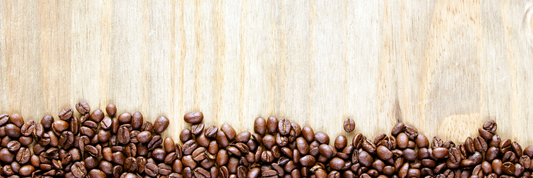When selecting paperboard for packaging, printing, or marketing materials, two primary options often come up: coated and uncoated paperboard. Each type offers distinct characteristics that can significantly impact the final product's appearance, durability, and environmental impact. In this blog post, we’ll explore the key differences between uncoated and coated paperboard, their benefits, common uses, and help you decide which is best suited for your project needs.
- Folding Carton vs. Corrugated Box: Understanding the Key Differences and Choosing the Right Packaging
- Craft Paper vs. Kraft Paper: Which Is the Better Choice?
What is Coated Paperboard?
Definition and Overview
Coated paperboard refers to paperboard that has been treated with a layer of coating, often applied to enhance its properties. This coating is typically made from materials like clay or polymer and provides a smooth, glossy finish that improves the printability of the board.
How Coating is Applied (Clay, Polymer, etc.)
The coating process involves spreading a layer of clay or polymer-based material onto the surface of the paperboard. This process not only enhances the visual appeal but also adds durability and resistance to external elements.
Types of Coatings (Glossy, Matte, Silk, Satin)
Coated paperboards come in various finishes, including:
- Glossy Coating: Creates a shiny, reflective surface for vibrant colors.
- Matte Coating: Offers a non-reflective, smooth finish for a sophisticated look.
- Silk and Satin Coating: Provides a smooth, luxurious texture with a subtle sheen.

Benefits of Coated Paperboard
- High Print Quality: Coated paperboards are ideal for printing high-quality images and text with vibrant colors and sharp details.
- Enhanced Durability: The coating helps to protect the paperboard from wear, moisture, and stains.
- Resistance to Moisture and Staining: The coating creates a barrier that repels moisture and stains, making it more durable in various environments.
Common Uses of Coated Paperboard
- Packaging: Especially for luxury goods and high-end food products, where appearance is critical.
- Marketing Materials: Perfect for catalogs, magazines, and promotional brochures where print quality is paramount.
What is Uncoated Paperboard?
Definition and Overview
Uncoated paperboard lacks the smooth, shiny layer of coating. It retains a natural, textured surface, offering a more organic, rustic feel that appeals to eco-conscious consumers and those seeking a more earthy aesthetic.
Lack of Coating: Natural Look and Texture
Without the added coating, uncoated paperboard maintains its raw, porous texture, giving it a unique tactile quality that stands out in certain applications.

Benefits of Uncoated Paperboard
- Writable and Printable Surfaces: The natural texture of uncoated paperboard makes it easy to write on, ideal for stationery and educational materials.
- Eco-Friendly and Recyclable: Uncoated paperboard is often considered more environmentally friendly because it is easier to recycle and doesn't contain additional chemicals found in coatings.
- Tactile and Rustic Aesthetic: Offers a vintage, natural appearance, making it perfect for eco-conscious designs and brands.
Common Uses of Uncoated Paperboard
- Stationery: Popular for business cards, letterheads, and notepads.
- Books and Educational Materials: Favored for publications that prioritize readability and sustainability.
- Eco-Friendly Packaging: A great option for sustainable packaging solutions.
Key Differences: Coated vs. Uncoated Paperboard
|
Aspect |
Coated Paperboard |
Uncoated Paperboard |
|
Surface Texture |
Smooth and glossy due to the coating layer. |
Natural, textured, and typically rougher. |
|
Appearance |
High sheen and vibrant colors. |
Softer, more muted colors with a rustic look. |
|
Print Quality |
Excellent color reproduction and sharp images. |
Colors may appear softer; details less defined. |
|
Ink Absorption |
Resists ink absorption for sharper prints. |
Absorbs ink, leading to a more subdued look. |
|
Texture |
Lacks tactile texture. |
Offers a tactile, organic feel. |
|
Applications |
High-quality packaging, printing, promotional materials. |
Crafts, rustic packaging, vintage-themed materials. |
|
Durability |
Resistant to moisture and wear. |
Less resistant to moisture and wear. |
|
Eco-Friendliness |
May be less environmentally friendly. |
More eco-friendly and biodegradable. |
|
Cost |
Generally more expensive. |
More affordable. |
Choosing Between Coated and Uncoated Paperboard
Factors to Consider
- Project Aesthetics: Coated paperboard gives a polished, professional finish, while uncoated offers a more organic and rustic appearance.
- Functional Requirements: Consider the durability needed for your product, as coated paperboard excels in protection and longevity.
- Budget Constraints: Uncoated paperboard is often a more affordable choice due to lower production costs.
- Environmental Considerations: If sustainability is a priority, uncoated paperboard is typically a more eco-friendly option.
Pros and Cons Comparison
- Coated Paperboard:
- Pros: High-quality finish, excellent color reproduction.
- Cons: Difficult to write on, higher cost.
- Uncoated Paperboard:
- Pros: Writable, eco-friendly.
- Cons: Less durable, lower color vibrancy.
Types of Coated Paperboard
- Gloss Coated
- Matte Coated
- Silk or Satin Coated
- UV or Specialty Coatings
Types of Uncoated Paperboard:
- Offset
- Vellum
- Smooth or Linen Finish
FAQs
Can I print on both coated and uncoated paperboard?
Yes, both types can be printed on, but coated paperboard typically offers sharper and more vibrant results.
Is coated paperboard more durable than uncoated?
Yes, coated paperboard is more durable due to its resistance to moisture and wear.
Which is more eco-friendly: coated or uncoated paperboard?
Uncoated paperboard is generally considered more eco-friendly as it is easier to recycle and doesn't contain chemical coatings.
Conclusion
Choosing between coated and uncoated paperboard depends on your specific needs, whether it's for packaging, printing, or marketing materials. Coated paperboard offers a glossy, durable finish perfect for high-quality print jobs, while uncoated paperboard is a more natural, eco-friendly option that suits rustic designs and writable surfaces. By considering factors like budget, aesthetic preference, and sustainability, you can select the right paperboard for your project.




